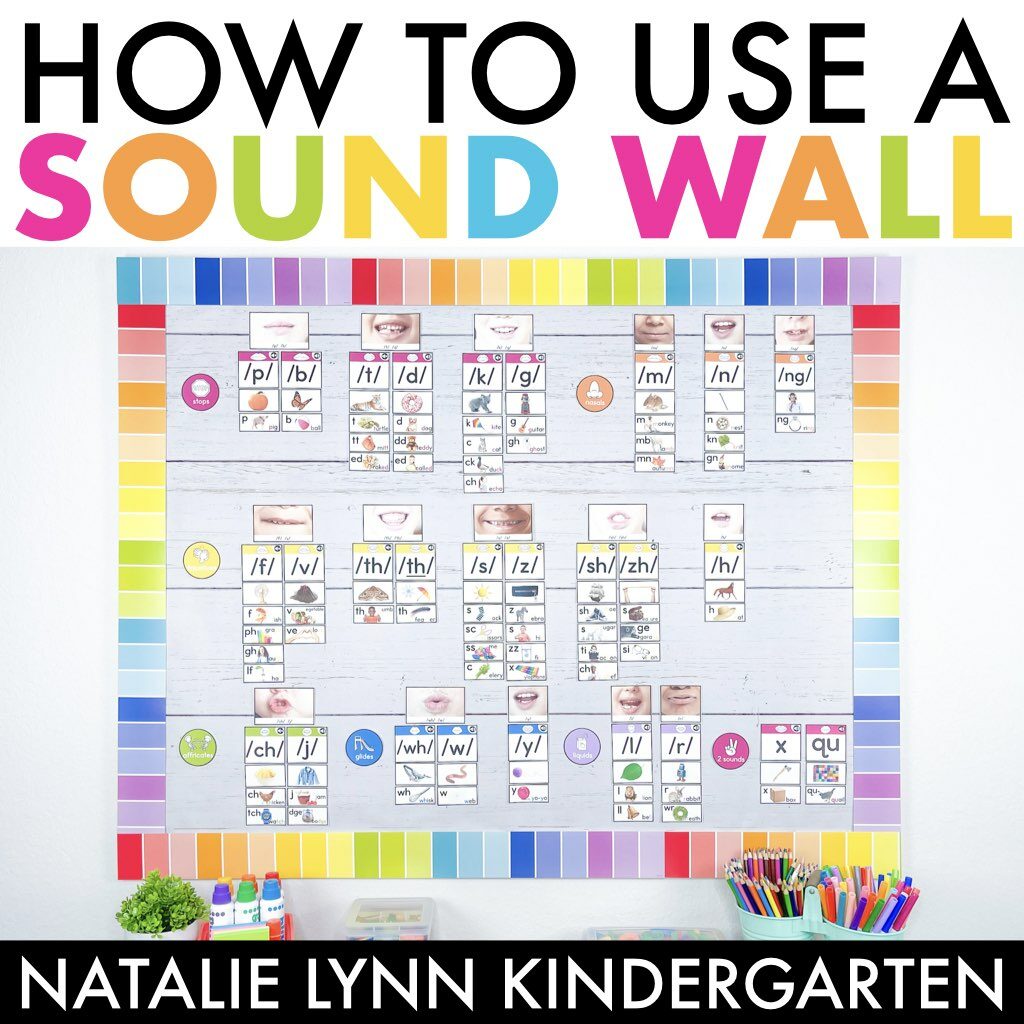
In this blog post: Learn all about what a sound wall is and how to use a sound wall effectively in your classroom.
You may be seeing sound walls, well, pretty much everywhere right now and wondering, “What is a sound wall? How can I use a sound wall in my classroom?”
Maybe you’re new to the Science of Reading and considering swapping your word wall for a sound wall, but you aren’t quite sure where to start or even what the difference is.
The truth is, sound walls can be amazingly effective literacy tools when used correctly.
They can also quickly become wall décor, put up in the background and never referenced again.
If you are wondering how to use a sound wall in the most effective way, this blog post can help!
Download the FREE Science of Reading Sound Wall here and then keep reading for how to implement it in your classroom:
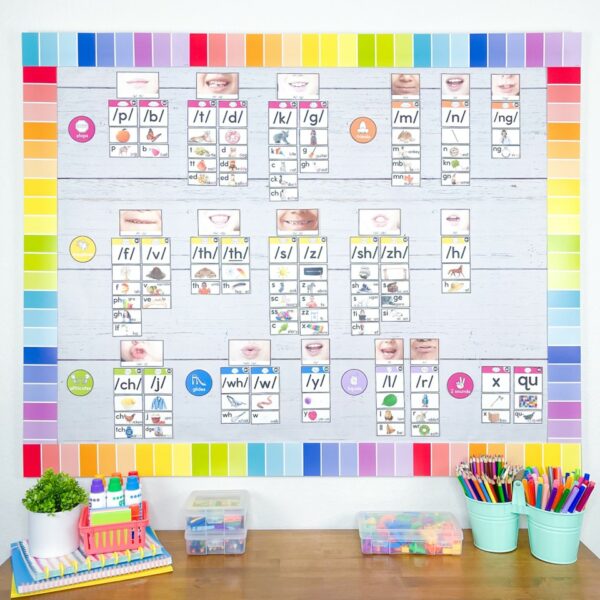
Do you love free stuff?
Free Science of Reading Sound Wall
Download a FREE Science of Reading aligned sound wall with real mouth photos and real pictures.
What is a sound wall?
A sound wall is similar to a word wall in that it is a visual reference for students. Instead of being organized alphabetically, a sound wall is organized by phonemes.
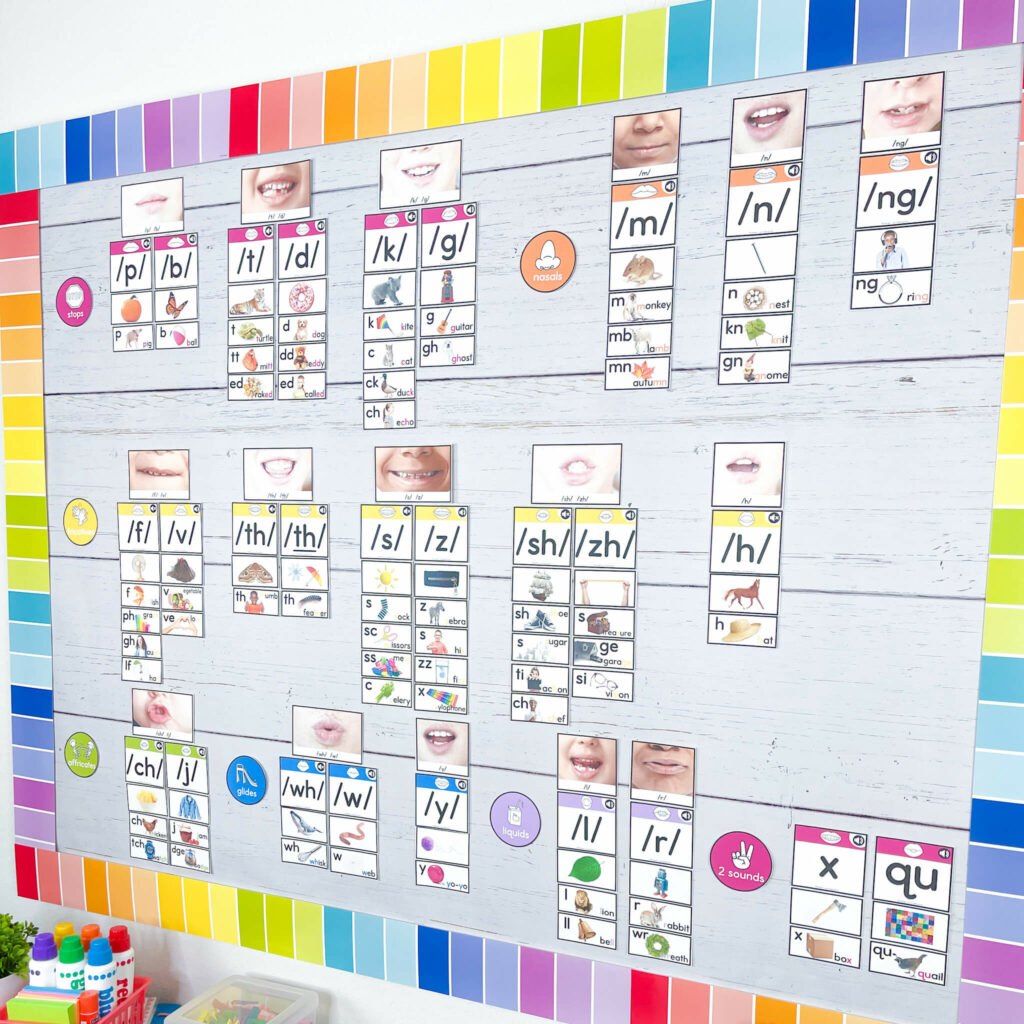
Phonemes = speech sounds
Phonemes are grouped and displayed on a sound wall by how we make and articulate the sounds.
Sounds are represented in words by graphemes, or written letters and spelling patterns.
As new spelling patterns are taught, they can be added to your wall under the correct sound. This acts as a reference for students when they are reading and writing.
Why a sound wall?
You may be wondering, why should I use a sound wall vs a word wall? Well, there are a few different reasons.
The first reason is that there are way more sounds than there are letters in the English language. Word walls organize words based on their first letter. But if a student doesn’t know how to spell the word the, are they going to think to look under the letter Tt? Sound walls organize words by phoneme.
The next reason is that speech comes naturally to humans, but reading and writing does not. Our brains are wired for speech! Sound walls allow you to introduce the phonemes first, and then help students connect those phonemes to their spelling patterns.
The parts of a sound wall
When learning how to use a sound wall in the classroom, it is important to know each part and why it’s there.
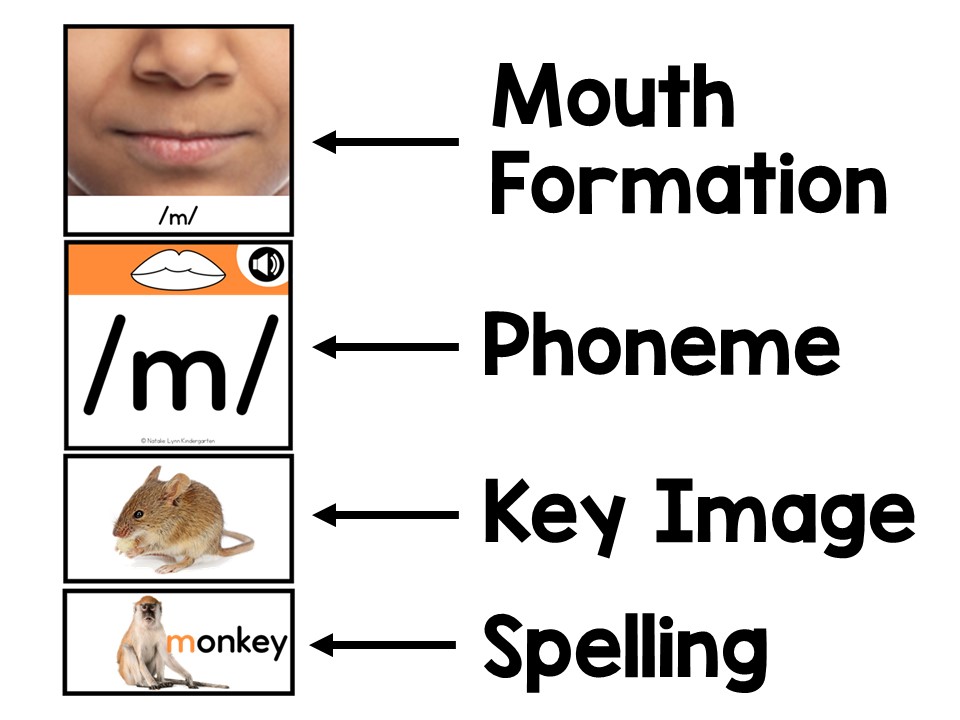
One of the most distinct parts of a sound wall is the mouth formation pictures. These pictures show students how their mouth should look when they articulate each sound.
The mouth formation pictures on your sound wall can be photos or clip art images, but it is even more effective to use photos of your own students articulating the sounds.
After the mouth formation picture, you will see the phoneme. This card shows how the sound is pronounced.
The phoneme card may also tell you if the sound is voiced or unvoiced. In a voiced sound, the vocal cords are active when making the sound. In an unvoiced sound, the vocal cords are not active and air is just passing through them.
Note: Phoneme cards should be turned around or covered by a lock until that sound is introduced to students. Your classroom sound wall should be an active, growing display as students learn!
After the phoneme card, I like to have a key picture for each sound. This picture helps students remember the sound and connect it to a real life word.
Finally, you have your grapheme spelling cards. These cards tell you different ways to spell each sound.
You will most likely NOT want to add every single grapheme spelling card.
Rather, only add cards as you introduce the spelling pattern. I suggest using Velcro dots on your sound wall as it will make it easy to remove and add sounds each year.
Consonant sound walls
When you are learning how to use a sound wall, you will see that it is actually divided into two different walls – a consonant sound wall and vowel valley.
A consonant sound wall organized the consonant phonemes by how the sound is formed and by where it is formed in the mouth.
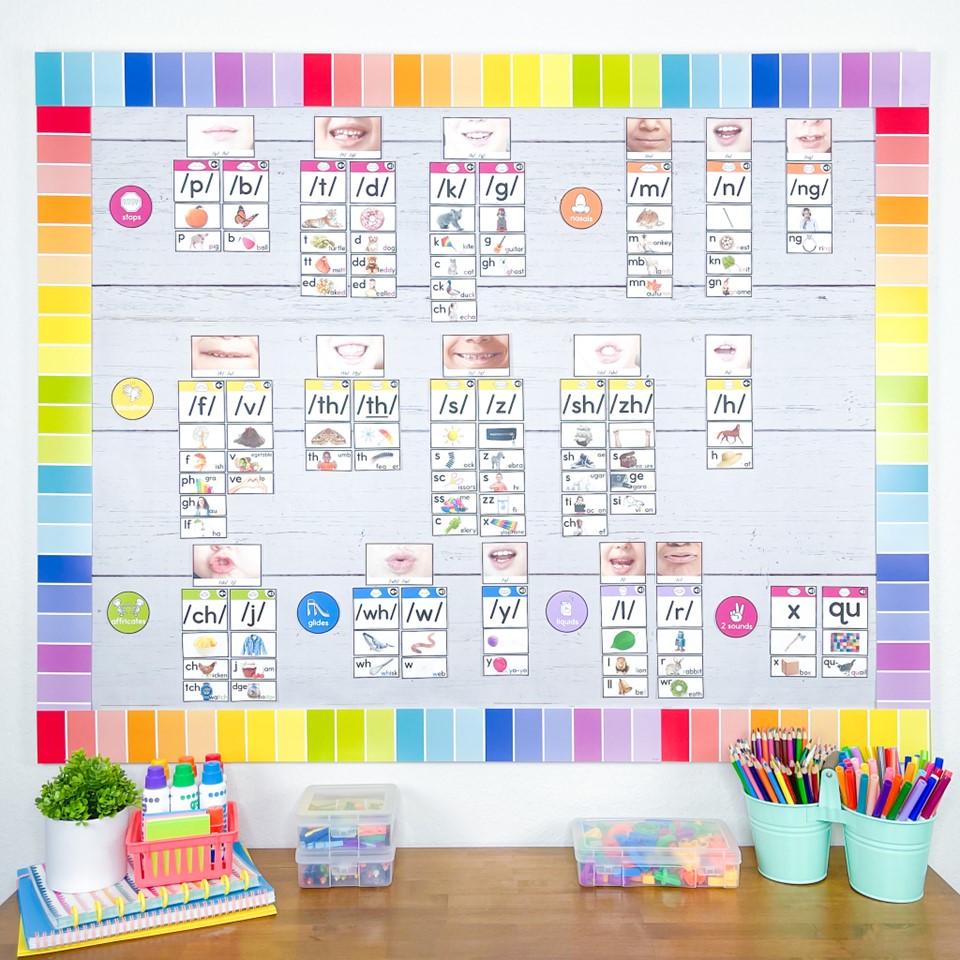
There are six different categories to classify the consonant sounds into, and one bonus category:
Stops – When you make a stop sound, you close off the airway and then a puff of air is pushed out. Stops include /b/, /p/, /d/, /t/, /g/, and /k/.
Nasals – Nasal sounds occur when the mouth is closed so air is forced out through the nose. Nasals include /m/, /n/, and /ng/.
Fricatives – Fricatives are made when the mouth is partially closed and air is forced through a narrow channel, causing friction. Fricatives include /v/, /f/, /th/, /th/, /s/, /z/, /sh/, and /zh/.
Affricates – Affricates combine a stop and a fricative. There is a stop of air and then it is forced out through a narrow channel. Affricates include /j/ and /ch/.
Glides – Glides are sounds that are formed similarly to vowels. In fact, in words that contain glides, the tongue often moves from the sound into a vowel sound. Glides include /y/, /wh/, and /w/.
Liquids – Liquids are formed by partially blocking the airway, but there is no friction. Liquid sounds include /l/ and /r/.
2 sounds – There are two consonants in the English language that actually represent two sounds. The letter X represents the sounds /k//s/ and the letter q represents the sounds /k//w/.
You will often see two phonemes with the same mouth formation. That is because one of those sounds is voiced and the other is unvoiced.
Voiced sounds activate your vocal cords and make them vibrate, while unvoiced sounds do not. Air just passes through the vocal cords.
Note: While there are voiced and unvoiced consonant sounds, all vowel sounds are voiced.
Vowel Valley
A vowel sound wall, or vowel valley, looks different than a consonant sound wall. When many teachers are learning how to use a sound wall, they often wonder why the vowel sound wall is shaped like a valley.
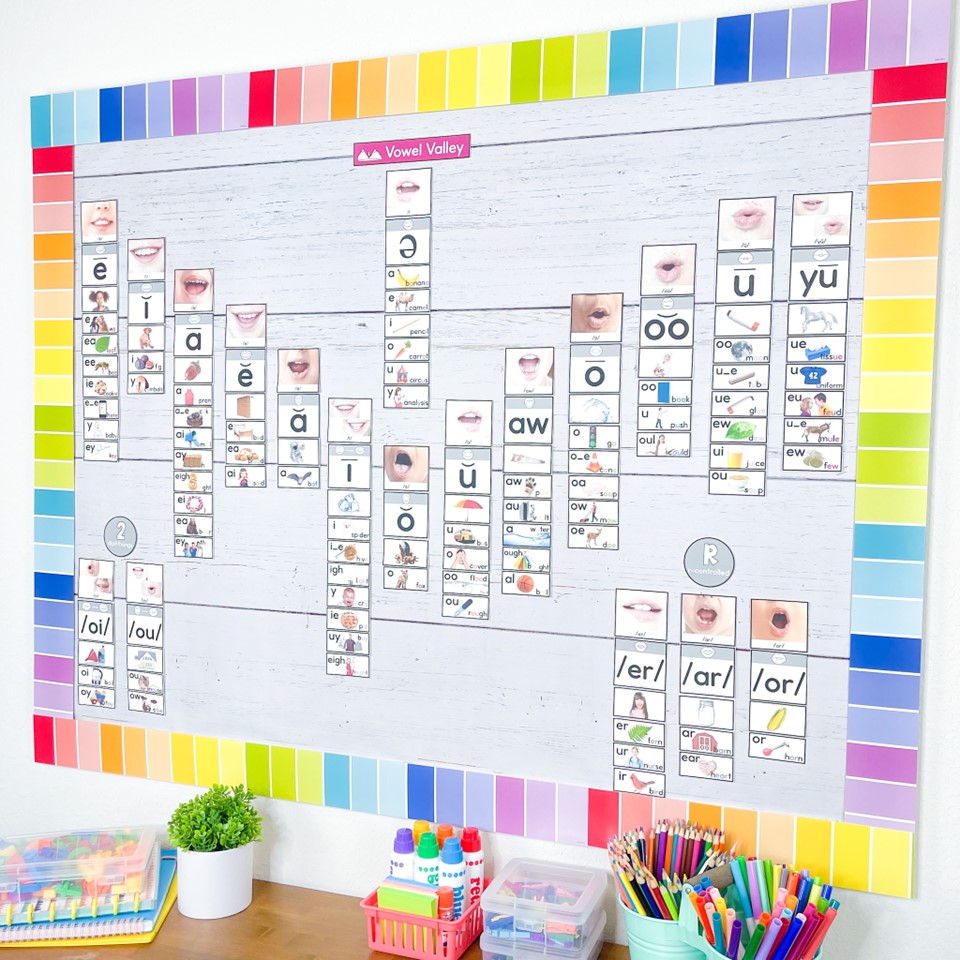
Vowel valley is meant to visually represent how the mouth changes and opens through the vowel sounds.
As you move down through the vowel sounds in vowel valley, you will notice that your chin lowers as your mouth opens in more of a rounded position.
There are also some vowel sounds on the vowel sound wall that sit outside vowel valley. These include diphthongs /oi/ and /ou/ and r-controlled vowels /er/, /ar/, and /or/.
Introducing sounds on the sound wall
Now that you have it set up in your classroom, it is important that you know how to use a sound wall to teach each sound.
You can incorporate it into your phonics lessons very easily.
First, tell students that today you are going to learn a new sound. Tell students the sound and show students how to form their mouth when they make the sound. Have them repeat it.
Next, show students they key image. Have students repeat the key image word. Help students identify the sound in the key image word.
“This is a leaf. What is the picture? Leaf begins with the sound /l/. Can you say /l/? Leaf, /l/.”
Then, introduce the grapheme you are teaching and add it to the sound wall.
Follow up this mini lesson by having students help you sound out and write words with the sound and spelling pattern you just introduced.
Say a word and have students help you count the sounds. Draw lines for each sound. Then, have students help you write the graphemes on the lines. Emphasize the new spelling pattern or sound you taught.
Last, have students practice stretching and writing words themselves with guided writing.
This will be similar to what you just did together. Students will say the word and count the sounds. They will draw lines to represent each sound. Then, they will write the graphemes on the lines.
Tips for using your sound wall in the classroom
Now that you know how to use a sound wall in the classroom, there are a few tips you will want to keep in mind when using your sound wall through the year.
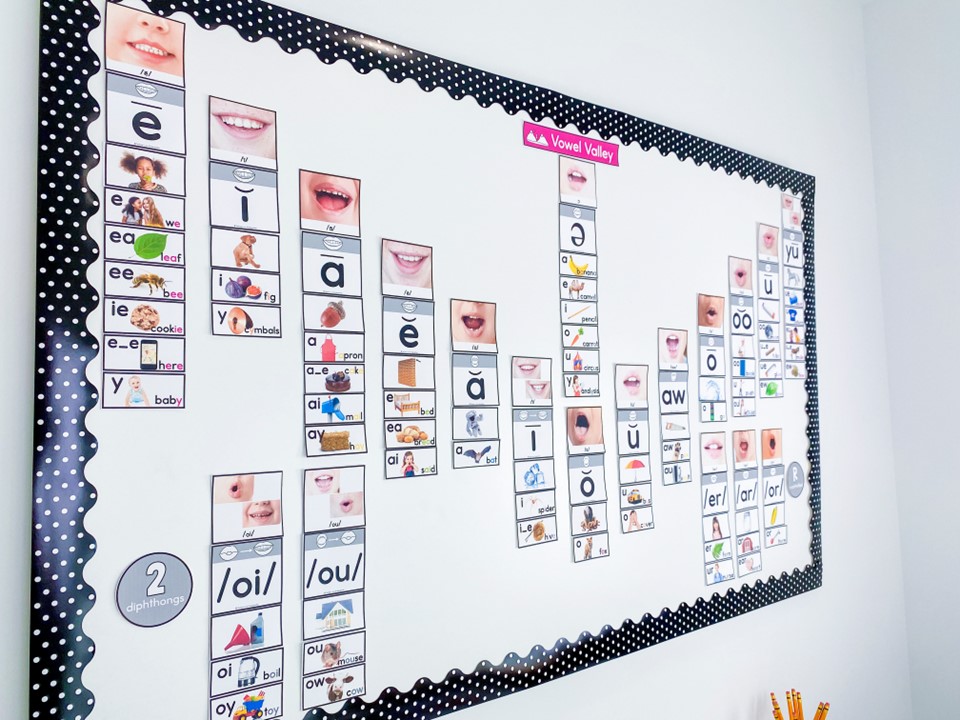
1. Make your sound wall a living and interactive bulletin board
If you want your sound wall to be a reference for students and not just wall décor, it is important to involved them in making the sound wall.
At the beginning of the year, it would be overwhelming to have every piece of the sound wall visible to students! Rather, display the mouth formation pictures, but have the phonemes turned around or covered by a lock.
As you introduce and teach the phonemes through the year, “unlock” them on the sound wall together with students.
You can choose to have all of the spelling cards on the sound wall at the beginning of the year and only cover up the phonemes.
Personally, I prefer to use Velcro dots on the sound wall to stick up the phonics patterns as we learn them. Depending on the grade level you teach, you most likely won’t teach every spelling pattern that makes a phoneme. You won’t add those spelling patterns to your sound wall!
2. Review the sounds you’ve introduced daily.
If you want your students to continually reference the sound wall, it is important to review the sounds you’ve taught daily. This can easily become a part of your morning meeting routine and will only take a few minutes each day.
Review the sounds on your sound wall with a routine similar to our alphabet chart routine. Point to the mouth formation photo and the phoneme and have students say the sound. Then, point to each spelling card and say the spelling, key image, and sound again – “f, fish, /f/”, “ph, graph, /f/.”
3. Model using the sound wall as a reference during writing
During your writing workshop lessons, you may have had a mini lesson on using the word wall to spell words. Similarly, you can have a mini lesson on using the sound wall to write sounds.
Model thinking of a sound, finding it on the sound wall, and writing it. This can be a lesson that you circle back to throughout the year.
Download a FREE Classroom Sound Wall here!
Now that you know how to use a sound wall in your classroom, it’s time to get started! My classroom sound wall resource was designed to make creating and setting up a classroom sound wall easy.
It includes color coding for each type of sound, mouth formation photos, and real life pictures for your key images.
Personal file folder sound walls and a digital sound wall are also included!
This sound wall has recently been updated to include more diverse mouth pictures. This is something that I believe is so important and I will continue to update the sound wall as I am able to find even more photos.
If you’re ready to make the shift to using a sound wall in the classroom, grab the Real Photo Classroom Sound Wall here:

Do you love free stuff?
Free Science of Reading Sound Wall
Download a FREE Science of Reading aligned sound wall with real mouth photos and real pictures.
Wait? Wasn’t this a paid resource before?
Yes! As of August 11, 2023, this has graduated to become a forever FREE resource! If you purchased it, you can email me your receipt and a link to another resource you would like for FREE (up to $10 in value). Just email me at natalielynnkindergarten@gmail.com.
More questions about sound walls?
Still have questions about how to use a sound wall in your classroom? Check out this blog post:
Free file folder sound wall
Looking for a space saving option for your classroom sound wall? Download the free file folder sound wall below:

Do you love free stuff?
free file folder sound wall
Grab these free, editable file folder sound walls to try with your class!
Looking to learn more about the Science of Reading? Check out these blog posts:
- What is the Science of Reading?
- Quick changes you can make today to align with SOR
- Guided reading and the science of reading
- How to teach heart words
- How to choose the best decodable readers
Looking for a resource to help you implement the Science of Reading in your classroom and make planning for small groups a breeze? Find the Science of Reading Curriculum here!
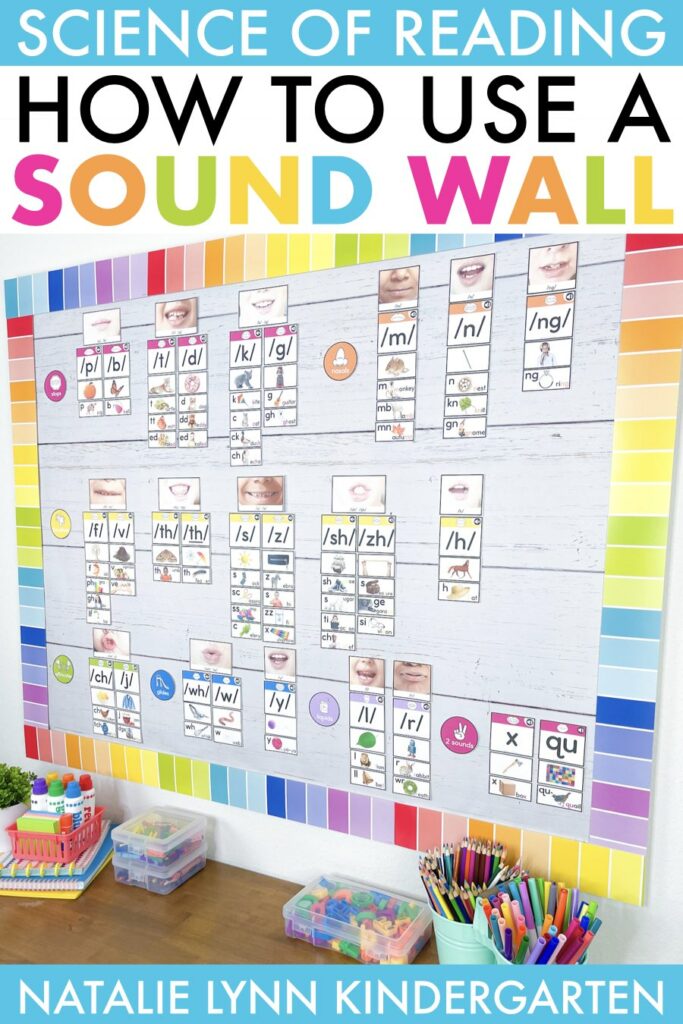



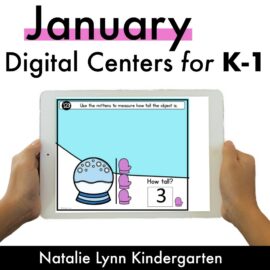
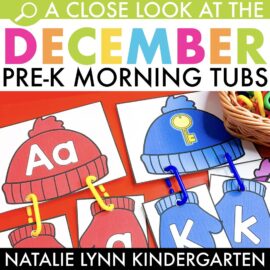

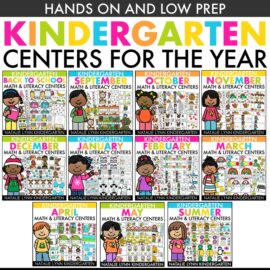
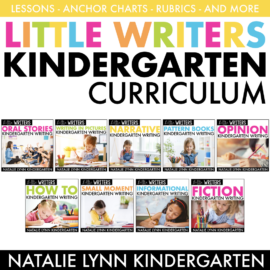
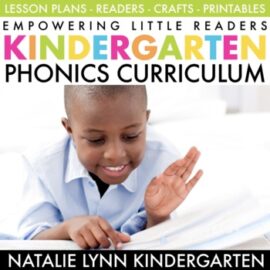
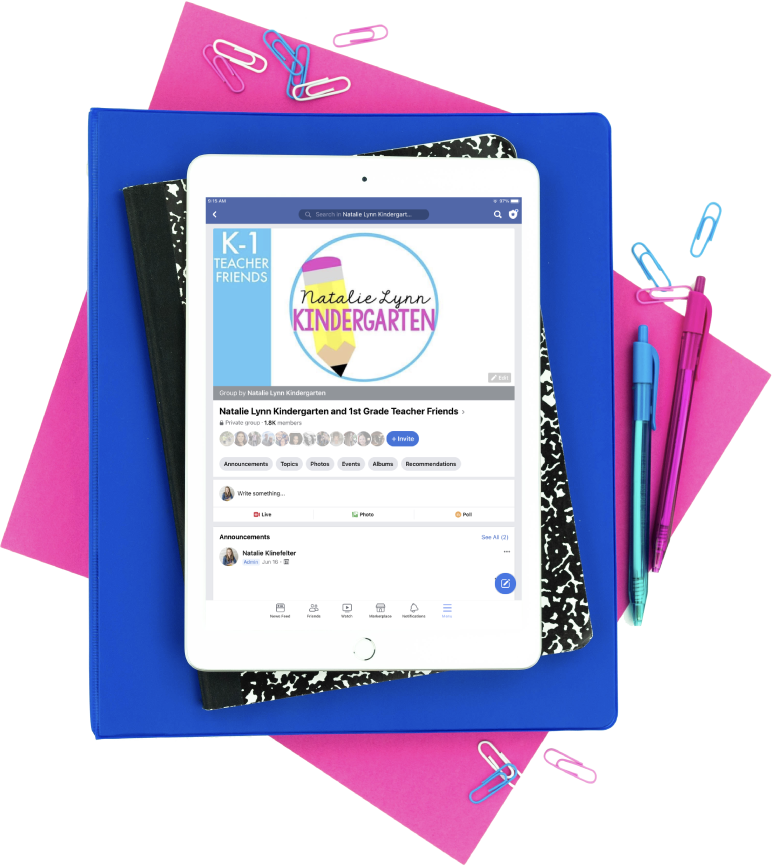

Wow. This is amazing. Thank you so much!
You’re welcome! Glad you enjoyed it!
I didn’t see this until Aug 3! Is it still being emailed and if it’s not free, how much is it?
Is it still being emailed and if it’s not free, how much is it?
I haven’t had a chance to make it paid yet so you can still download it.
The way you explain everything is fantastic. Thank you for your explicit information regarding the sound wall! It will be a great resource for my kiddos (and parents!!)
Thank you so much, Andrea! I hope you enjoy using this sound wall this year.
Hi! I have limited bulletin boards and not space for the consonants and the vowels. Suggestions on placement together?
While vowel valley is the recommended placement, you could also display the vowels in 1-2 lines underneath the consonants or going down a door. You could also place display all of the consonants and vowels in a line, similar to an alphabet line.
Do you have a example of how you have your sound wall locked?
To have your sound wall locked, you would cover the phoneme cards (the ones with the sound like /b/) with the card that has a lock on it. When you introduce the sound, you would unlock it or uncover it. I don’t have a picture right now, but I can definitely add one.
Next year is my first year as a reading teacher. I will be pulling k-5 students who are low in phonics skill out of their regular classrooms for small group lessons. I would love to implement a sound wall but working with different level of kids all day, do you have any suggestions on how I should make it work?
I would have the entire sound wall up, and just make sure that you use it intentionally with each group. For the younger groups, going through a sound wall routine as mentioned in the blog post will help solidify the sounds and where they are on the sound wall. For the older groups, use it to introduce new spelling patterns and model using it as a tool to when writing. You might even take the spelling cards off and have students help match them to the correct sound on the sound wall.
I thank you so much for generously sharing this! It looks really good and I appreciate your explanations about how to set it up and use it. Especially your answer about how to use it if you pull small groups.
You’re welcome! I’m glad it was helpful!
Super excited
Thank you for sharing your hard work! I appreciate it!
You’re welcome! I’m glad you enjoyed it!
Thank you for sharing your hard work. It is much appreciated!
Thank you so much! I feel so empowered to introduce the sound wall. Your generosity in sharing these resources is greatly appreciated.
I’m glad it was helpful!
Thank you, this is going to really help my students! You are awesome! I really appreciate you for sharing this with us!
You’re welcome! I’m glad it was helpful!
Thank you so much!! I cannot wait to use this in my classroom!!
You’re welcome! Glad you enjoyed it!
I feel like I hit the jackpot! Thank you so much for sharing this FREE download!
You’re welcome! I’m so glad you enjoyed it!
THANK YOU so much for this FREE download!!!
Youre welcome! Glad you enjoyed it!
I teach VPK and currently have a word wall. Would a sound wall be a better tool to use?
Thank you for a great resource.
Hi! I’m not exactly sure what VPK is, but I’m thinking it’s PreK or Kindergarten? A sound wall is so helpful, but only if you are intentional about using it! Students can use it to identify sounds and their spellings as they are writing. I don’t suggest putting sight words on your soind wall because it can get overwhelming. You could have a “tricky words” wall or pocket chart where you put the words you’re working on, and then relate them to the sounds on the sound wall, but the goal is that those words would leave the wall when mastered.
Thank you so much for your reply. VPK is Pre-K. Your resources are very helpful and I appreciate the time and creativity you put into them. Thank you again for sharing and helping us learn better ways to help our children grow in their language development.
Hi can you make a card for the /eR/ sound made with “or” as in work? I taught that spelling for /eR/ for the first time in 23 years of teaching last year. Thanks
Also, thank you so much for this wonderful resources. It’s amazing!
Yes absolutely! If you email me at natalielynnkindergarten@gmail.com I can send it right to you so that you don’t have to redownload the entire sound wall.
I would love this /er/ with wor as well. it corresponds to my implementation of Spalding Phonics.
Email me at natalielynnkindergarten@gmail.com! I have that card ready, I just haven’t had a chance to update the file yet.
You can email me directly at natalielynnkindergarten@gmail.com
This is a fantastic resource and it is much appreciated that it is free. Do you happen to have a resource connected with this that the kids can use at their desk ( the sound wall that fits on a few pages)
Yes! In the free phonics tool kit download, there are mini sound wall rings. Students can easily flip to the sounds they need! https://natalielynnkindergarten.com/science-of-reading-phonics-tool-kit/
Thank you so much for this AMAZING resource! I am limited on wall space, so I was thinking of making them on posters, so that I can move them around my room (by the carpet for whole group and then in the back of the room by my guided reading table for small groups). Can you possibly tell me what size your finished display (for each– Sound Wall and Vowel Valley) takes up? I’m debating if I should change the print settings to make it smaller… Thank you so much in advance for taking the time to respond. I truly appreciate it! Also, thank you for generously sharing this wonderful resource!
Thank you so much! This is perfect!
Hi Natalie,
Is there a way to put this together as one bulletin board or it it better to have two? If I can do it as one bulletin board, can you show me an example?
Thank you so much!
Yes you can. If you send me an email I can show you what that might look like.
I am not sure how to download the sound wall photos?
Just enter your email in the box and it will email them to you.
Sound Wall Please
It’s no longer a flash freebie but you can find it here: https://www.teacherspayteachers.com/Product/Sound-Wall-with-Mouth-Pictures-File-Folder-Science-of-Reading-Sound-Wall-8399337?utm_source=NLK%20blog&utm_campaign=Sound%20walls
I’m not seeing I as a freebie.
It’s no longer a flash freebie, that was only through July, but you can find the sound wall here: https://www.teacherspayteachers.com/Product/Sound-Wall-with-Mouth-Pictures-File-Folder-Science-of-Reading-Sound-Wall-8399337
What size bulletin boards do you have each one on?
Each display measures about 5×5. You can make it smaller by printing at a smaller scale. The boards used for pictures were 4×3 so it had to be printed at 50%.
Oh my goodness! I cannot believe I stumbled upon this freebie so late! You have created the perfect sound wall!! The real photos, bright colors and kinder friendly font! This checks off all the boxes! Saving my pennies to purchase this ASAP.
Can I get your sound wall? I love how you have it set up and all explanations. Great resource for Kindergarten.
Oh my goodness, where have you been all my life? hahaha these tasks, wall demos, posters, are wonderful- thank you so much
Hi,
I will be teaching a first/second grade class. Since I have such a wide range of students in my class do you still recommend locking my sound wall and introducing each sound at the start of the school year? My concern is that dong that will benefit some of my students while others are already past specific phonemes. Once the year gets underway I will be teaching phonics in small groups in order to meet the needs of all my students. Thoughts?
Thank you for your wonderful resources! I purchased the SOR curriculum bundle and just love it!!
Hi Jessica! With 1st/2nd grade, you can begin the year with some of the sounds students would have already learned in Kindergarten unlocked. I would just make sure to review them so that students know how to access those sounds. Then you can unlock the new “grade 1/2 sounds” with students at the beginning of the year.
Love this! Thanks for your generosity. Can I purchase the vowel valley?
The vowel valley comes with the sound wall free download! You get both the consonant wall and vowel valley, the file folder version, and the digital version.
This is great but the link does not work for at all
Could you send it my way please?
Hi! There is no link. You just need to enter your email where it says Send It To Me and you will get an email with the link to download. If you have a pop up blocker on, you may want to try shutting it off.
Maybe I’m just not thinking clearly, but can you explain how the brick wall matches the short e sound?
That represents edge. It’s a little hard to see in the picture, but there is an arrow pointing to the edge of the wall.